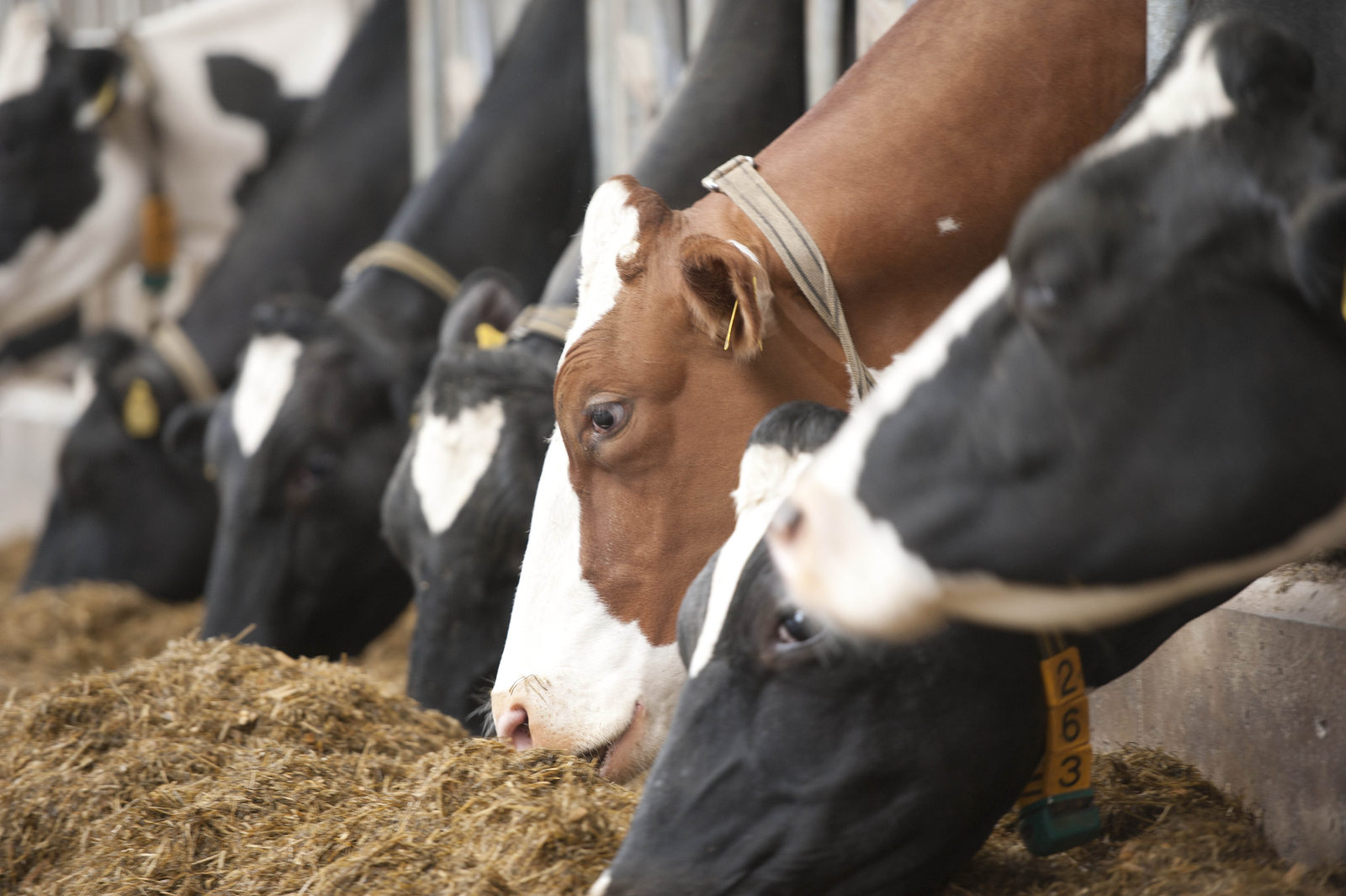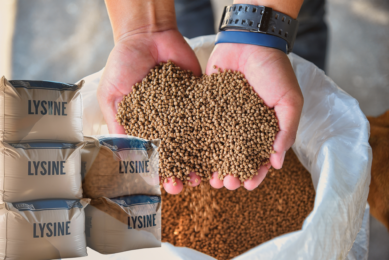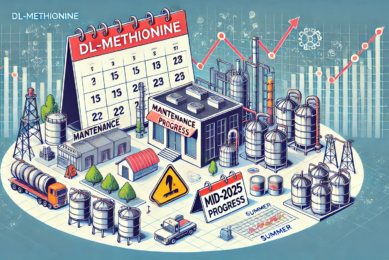Amino acid use in practice

Two different strategies to balance amino acids in the feed can be applied: On Top application or Reformulation.
Amino acids are important for dairy cows. Here we present some practical examples from ‘on top application’ and ‘reformulation’, the two amino acid strategies a farmer can use.
Amino acid (AA) nutrition will prevent many current problems, but it is also a long-term strategy to support dairy farm sustainability. It improves the Nitrogen (N)-efficiency of the overall farm, thus reducing the N-load to the environment and having a positive impact on milk production, milk quality, animal health and feed costs. The latter is especially important, as feed costs can be up to 50% of a farm’s total expenses.
Two different ways
Nutritional models are now available to predict supplies of AA for dairy cows and methionine (Met) is accepted as the most limiting AA. Two different AA strategies can be applied; On Top application or Reformulation. Rumen-protected AA (RP-AA) supplements are added on top of the feed formulation to improve animal performance. This strategy is usually applied at times of higher milk prices. In Reformulation, RP-AA are utilised to reformulate the diets to obtain the same or better animal performance at lower rumen-undegradable protein (RUP) and CP levels with a less expensive raw material mix.
Practical cases
The following examples represent actual on-farm cases for both of the above-mentioned strategies and are meant to give some practical cases for nutritionists to examine. Every diet was developed by a consultant or nutritionist taking the local availability of raw material and prices into account. Moreover, farm characteristics vary significantly, not only within a country but between countries, and therefore responses to diet changes are different. As the data relates to commercial farms, it provides a good idea of the impact of AA formulation in dairy diets.
On Top application on a German farm
A farm in North-West Germany had 75 Holstein-Friesian dairy cows. Average milk production was 11,714 kg of milk with 3.89% fat and 3.30% protein. The farm was equipped with a milking robot that allowed the individual administration of a specific mix. The feeding system of the farm followed a partial mixed ration (PMR) with two types of compound feed fed in the milking robot station according to the stage of lactation and milk yield. The PMR consisted of a combination of grass and corn silage, 3 kg/cow of protein concentrate and 200 g/ cow of mineral feed. A rumen-protected methionine (RP-Met) was included at a daily rate of 15 g/cow in the mineral feed for all lactating cows fed in the milking robot. The feeding of RP-Met started in September 2013, after one month of regular milk recording, and lasted until April 2014. The test followed the OFF-ON approach. Results from the OFF period were taken from the last milk recording without RP-Met in September 2013. The ON period refers to the months there-after with the inclusion of RP-Met.
Maximum effect after three months
Feeding the cows 15 g of the rumen-protected methionine in an On Top application increased milk performance in early and middle lactation. The maximum effect occurred after three months of treatment. After a few weeks of treatment, the early lactation cows responded with greater milk yield, whereas middle lactation cows responded with greater milk protein content and with greater milk yield later. The delayed response from middle and late lactation cows can be explained by better milk curve persistency in the cows that move from fresh to later stages of lactation during the RP-Met feeding period. Under these conditions, one is advised to feed RP-Met for at least three months to observe the maximum effects.
Also interesting:
– Amino acids: Balance is essential
– Piglets have a lower amino acid digestibility
– Quality in silage for better milk production
Reformulation on a French farm and a Spanish farm
On a French dairy farm, a typical diet was 15 kg DM/cow/day of corn silage, 2 kg DM/cow/day of grass silage and 3.5 kg of a protein concentrate. Reformulation of the protein concentrate was done using the SmartMILK matrix. The RP-Met source used is a product known for its stability during pelleting. The reformulated protein concentrate had a cost of €314/tonne, compared with the original at €327/tonne. Under the market conditions at the time of the trial, the reformulation approach provided savings of at least €13/t in the protein concentrate. Experience at the field level over the past four years indicates the reformulated formula has become very competitive in the market and has also helped to reduce N load in the environment, while improving milk quality by about 0.3 g/kg of milk protein content. In Spain, the situation was studied on an association of farms located in the North-West part of the country. All these farms had more than 800 dairy cows and the main common characteristic was that they fed the cows the same total mixed ration (TMR). The TMR was produced by a feeding centre that took care of raw material purchasing and silage making. On average, the cows produced 10,000 kg milk/year with a milk composition of 3.65% fat and 3.25% protein. The objectives for the reformulation exercise were to maintain milk production during the summer heat and reduce feed costs, because at that moment prices for soybean meal were at a record high.
Reduction in feed costs
In the reformulated TMR, soybean meal was significantly reduced and other alternative raw materials, such as rapeseed meal and DDGS wheat, were included. A RP-Met source was used. The crude protein level of the diet declined by 1.1% units and the LysDi/MetDi relationship improved from 3.77:1 to 3.06:1 by keeping grams of LysDi constant and improving the supply of MetDi. The first direct benefit was a reduction in the feeding costs by €0.84 per cow per day. Even though improved milk performance is not one of the key objectives when reformulating diets, in this case the average milk production went up by 2 kg and the milk protein percentage and yield also increased. This resulted in a direct improvement of N efficiency by nearly 3 points.
References are available on request.











